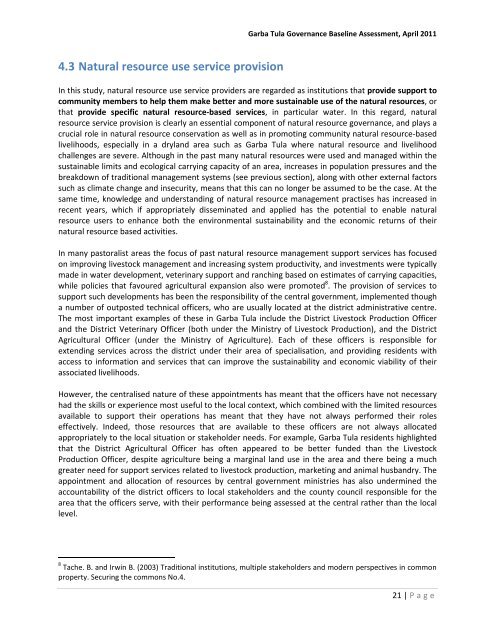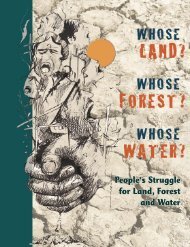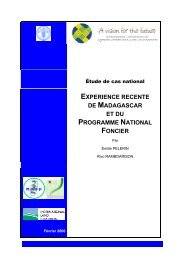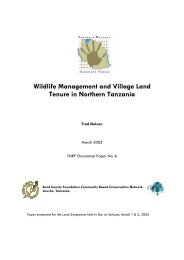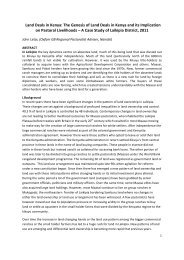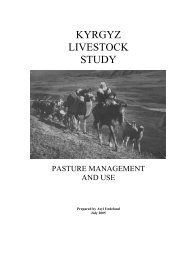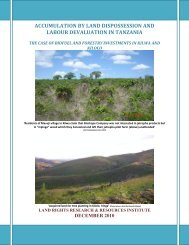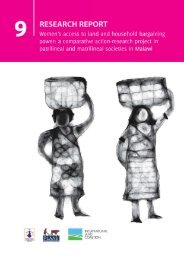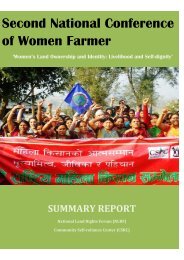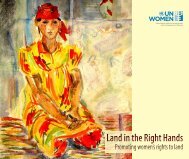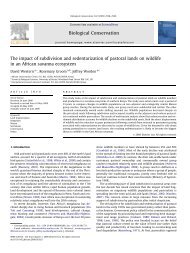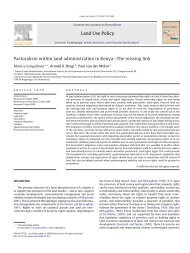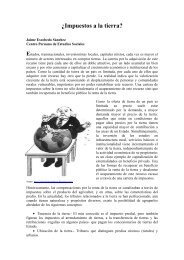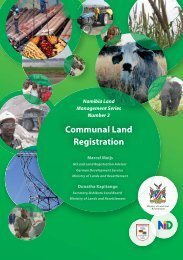Garba Tula Governance Assessment Final Report ... - Land Portal
Garba Tula Governance Assessment Final Report ... - Land Portal
Garba Tula Governance Assessment Final Report ... - Land Portal
You also want an ePaper? Increase the reach of your titles
YUMPU automatically turns print PDFs into web optimized ePapers that Google loves.
4.3 Natural resource use service provision<br />
<strong>Garba</strong> <strong>Tula</strong> <strong>Governance</strong> Baseline <strong>Assessment</strong>, April 2011<br />
In this study, natural resource use service providers are regarded as institutions that provide support to<br />
community members to help them make better and more sustainable use of the natural resources, or<br />
that provide specific natural resource-based services, in particular water. In this regard, natural<br />
resource service provision is clearly an essential component of natural resource governance, and plays a<br />
crucial role in natural resource conservation as well as in promoting community natural resource-based<br />
livelihoods, especially in a dryland area such as <strong>Garba</strong> <strong>Tula</strong> where natural resource and livelihood<br />
challenges are severe. Although in the past many natural resources were used and managed within the<br />
sustainable limits and ecological carrying capacity of an area, increases in population pressures and the<br />
breakdown of traditional management systems (see previous section), along with other external factors<br />
such as climate change and insecurity, means that this can no longer be assumed to be the case. At the<br />
same time, knowledge and understanding of natural resource management practises has increased in<br />
recent years, which if appropriately disseminated and applied has the potential to enable natural<br />
resource users to enhance both the environmental sustainability and the economic returns of their<br />
natural resource based activities.<br />
In many pastoralist areas the focus of past natural resource management support services has focused<br />
on improving livestock management and increasing system productivity, and investments were typically<br />
made in water development, veterinary support and ranching based on estimates of carrying capacities,<br />
while policies that favoured agricultural expansion also were promoted 8 . The provision of services to<br />
support such developments has been the responsibility of the central government, implemented though<br />
a number of outposted technical officers, who are usually located at the district administrative centre.<br />
The most important examples of these in <strong>Garba</strong> <strong>Tula</strong> include the District Livestock Production Officer<br />
and the District Veterinary Officer (both under the Ministry of Livestock Production), and the District<br />
Agricultural Officer (under the Ministry of Agriculture). Each of these officers is responsible for<br />
extending services across the district under their area of specialisation, and providing residents with<br />
access to information and services that can improve the sustainability and economic viability of their<br />
associated livelihoods.<br />
However, the centralised nature of these appointments has meant that the officers have not necessary<br />
had the skills or experience most useful to the local context, which combined with the limited resources<br />
available to support their operations has meant that they have not always performed their roles<br />
effectively. Indeed, those resources that are available to these officers are not always allocated<br />
appropriately to the local situation or stakeholder needs. For example, <strong>Garba</strong> <strong>Tula</strong> residents highlighted<br />
that the District Agricultural Officer has often appeared to be better funded than the Livestock<br />
Production Officer, despite agriculture being a marginal land use in the area and there being a much<br />
greater need for support services related to livestock production, marketing and animal husbandry. The<br />
appointment and allocation of resources by central government ministries has also undermined the<br />
accountability of the district officers to local stakeholders and the county council responsible for the<br />
area that the officers serve, with their performance being assessed at the central rather than the local<br />
level.<br />
8 Tache. B. and Irwin B. (2003) Traditional institutions, multiple stakeholders and modern perspectives in common<br />
property. Securing the commons No.4.<br />
21 | P a g e


